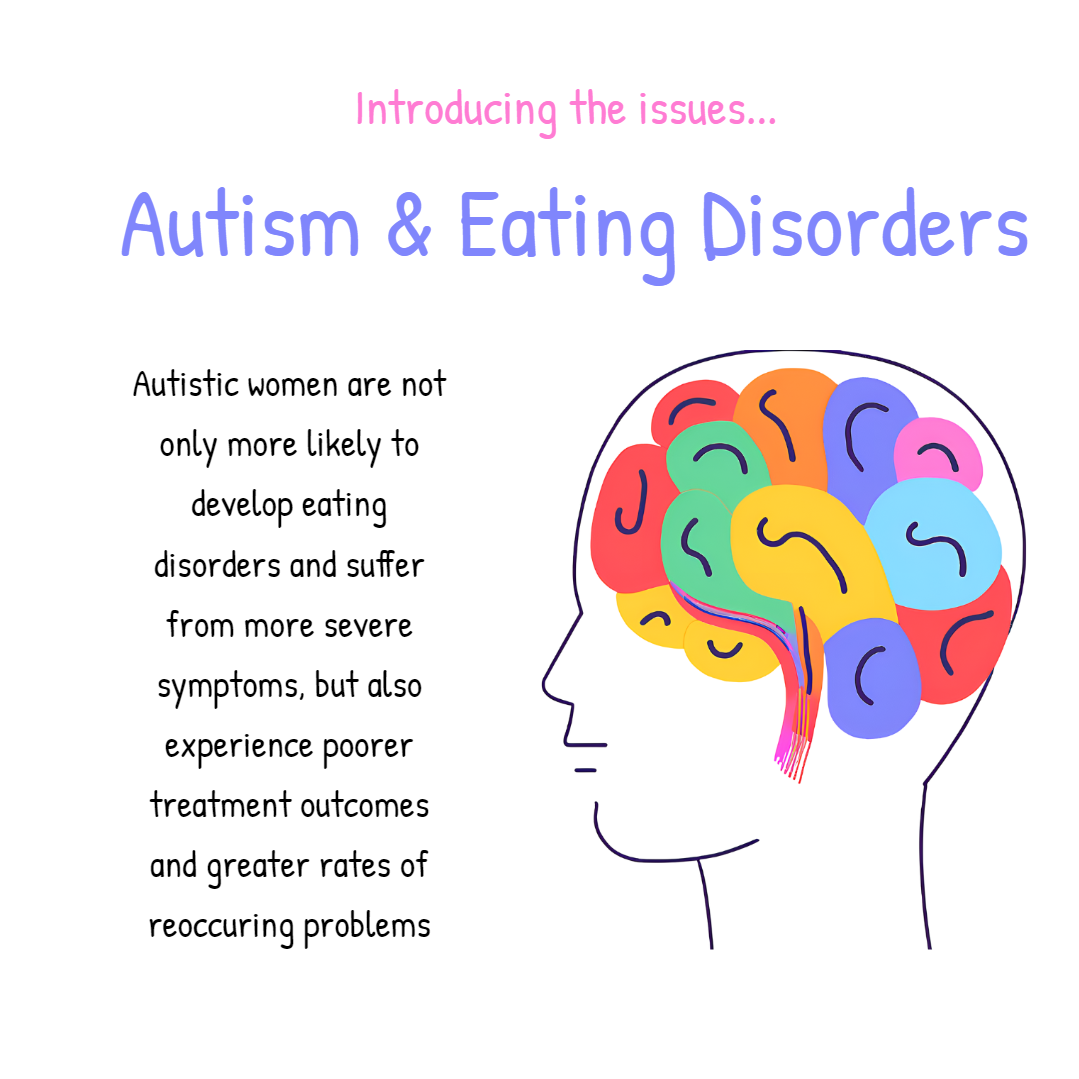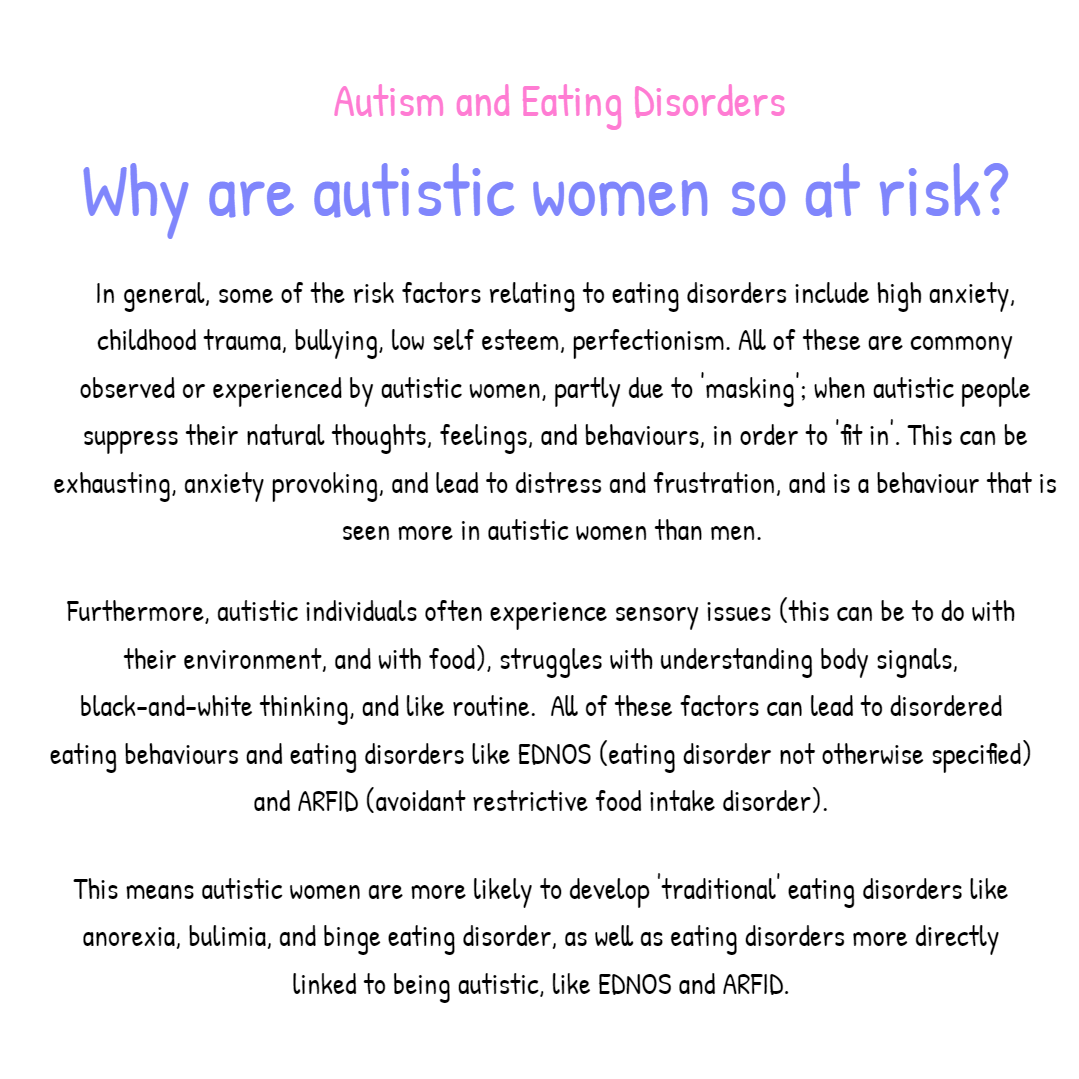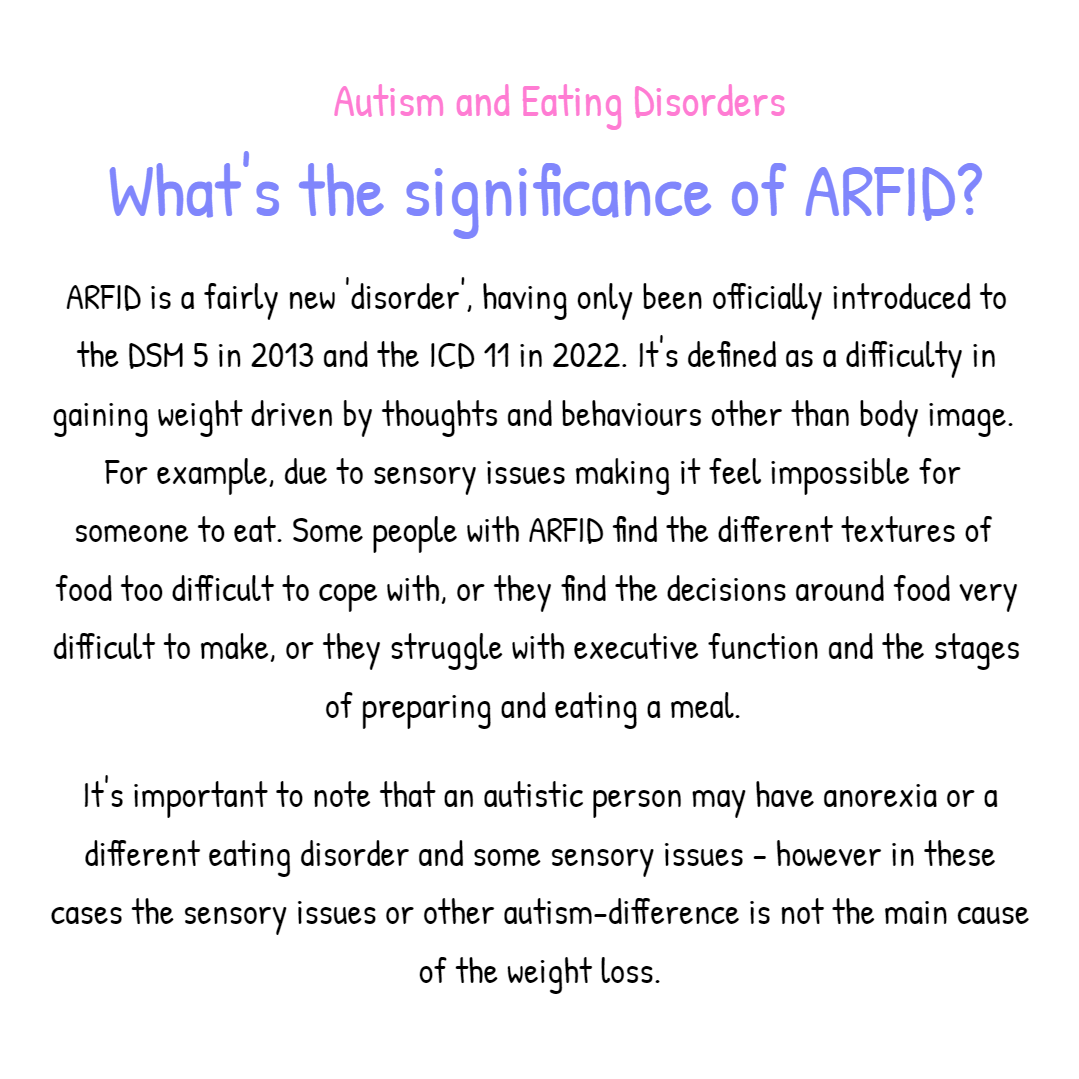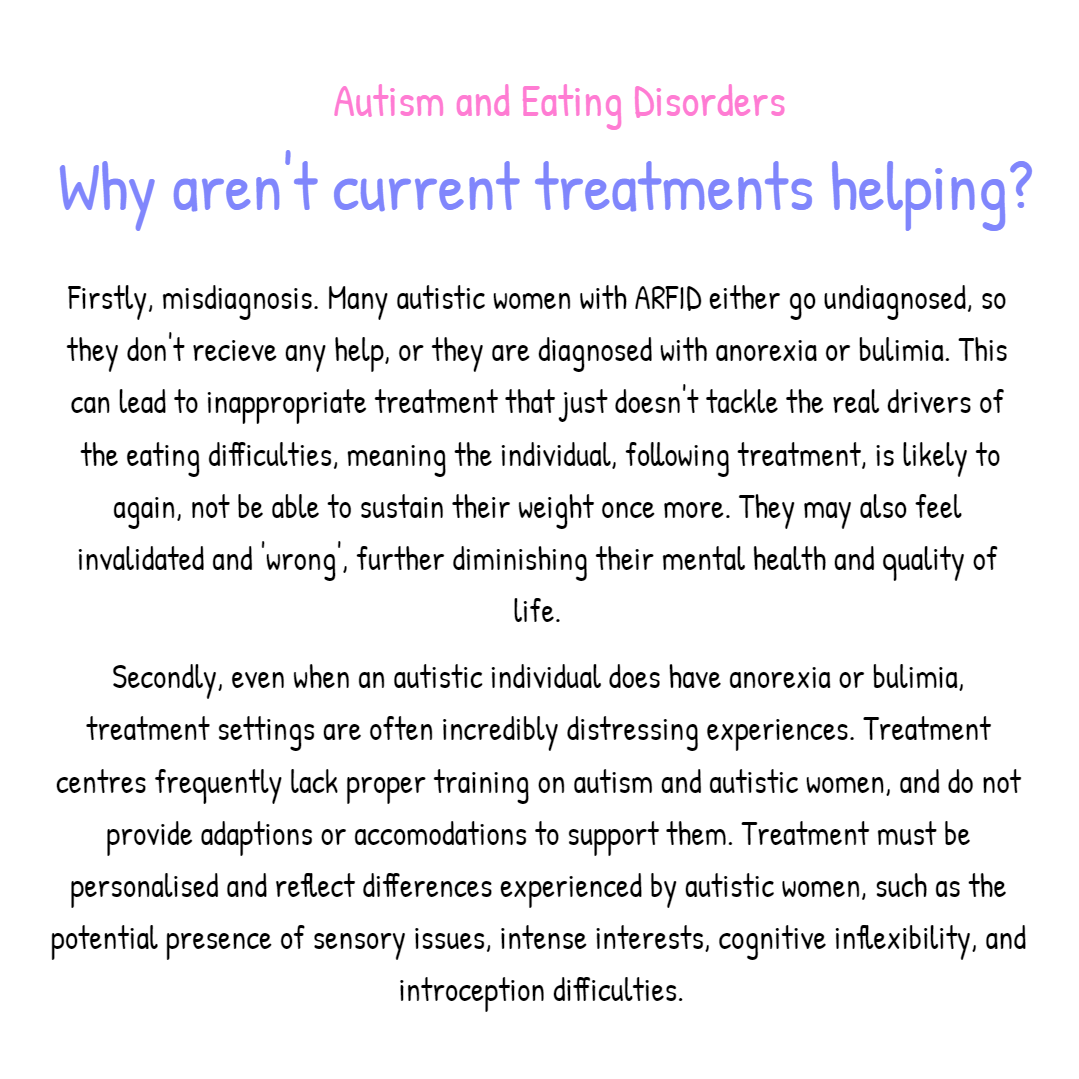One of the biggest current issues concerning the health of autistic women is current diagnosis, treatment, and overall understanding of eating disorders and autism. Any kind of disordered eating can have a severe impact on one’s wellbeing and quality of life, as well as long term physical complications, and anorexia in particular has the highest mortality rate out of all mental health conditions. Autistic women are not only more likely to develop eating disorders and suffer from more severe symptoms, but also experience poorer treatment outcomes and greater rates of reoccuring problems…this needs to change.
There are a lot of different aspects to this topic, so I’m going to try to break it down as much as I can.
Why are autistic women more likely to develop eating disorders?
Again, there’s different sides to this. In general, some of the risk factors relating to eating disorders include high anxiety, childhood trauma, bullying, low self esteem, perfectionism. All of these are commony observed or experienced by autistic women, partly due to ‘masking’; when autistic people suppress their natural thoughts, feelings, and behaviours, in order to ‘fit in’. This can be exhausting, anxiety provoking, and lead to distress and frustration, and is a behaviour that is seen more in autistic women than men.
Furthermore, autistic individuals often experience sensory issues (this can be to do with their environment, and with food), struggles with understanding body signals, black-and-white thinking, and like routine. About 70% of autistic children have eating behaviours described as ‘atypical’, compared to 5% of non-autistic children, and 1 in 3 autistic people have gastrointestinal issues, which may affect which foods they can eat. All of these factors can lead to disordered eating behaviours and eating disorders like EDNOS (eating disorder not otherwise specified) and ARFID (avoidant restrictive food intake disorder).
This means autistic women are more likely to develop ‘traditional’ eating disorders like anorexia, bulimia, and binge eating disorder, as well as eating disorders more directly linked to being autistic, like EDNOS and ARFID.
What’s the significance of ARFID?
ARFID is a fairly new ‘disorder’, having only been officially introduced to the DSM 5 in 2013 and the ICD 11 in 2022. It’s defined as a difficulty in gaining weight driven by thoughts and behaviours other than body image. For example, due to sensory issues making it feel impossible for someone to eat. Some people with ARFID find the different textures of food too difficult to cope with, or they find the decisions around food very difficult to make, or they struggle with executive function and the stages of preparing and eating a meal.
It’s important to note that an autistic person may have anorexia or a different eating disorder and some sensory issues – however in these cases the sensory issues or other autism-difference is not the main cause of the weight loss.
Why aren’t current treatments helping?
So, why is it that autistic womens’ treatment outcomes are so poor? Firstly, misdiagnosis. Many autistic women with ARFID either go undiagnosed, so they don’t recieve any help, or they are diagnosed with anorexia or bulimia. This can lead to inappropriate treatment that just doesn’t tackle the real drivers of the eating difficulties, meaning the individual, following treatment, is likely to again, not be able to sustain their weight once more. They may also feel invalidated and ‘wrong’, further diminishing their mental health and quality of life.
Secondly, even when an autistic individual does have anorexia or bulimia, treatment settings are often incredibly distressing experiences. Treatment centres frequently lack proper training on autism and autistic women, and do not provide adaptions or accomodations to support them. Treatment must be personalised and reflect differences experienced by autistic women, such as the potential presence of sensory issues, intense interests, cognitive inflexibility, and introception difficulties.
What needs to change?
Well, a lot! We need greater awareness of autistic women and how autism can impact eating behaviours. Then we need more guidance and training for healthcare providers on how to adapt treatment and what accomodations could be put in place, for autistic women undergoing treatment.
We also need more understanding of ARFID, and how to treat it.
All of this will take different forms – policy change, research, sharing experiences. We also need more rights to protect autistic women who aren’t recieving the right treatment.
I hope this helps to explain a bit about the background to autism and eating disorders, and maybe helps you to think about how to make change and improve things.
The impact an eating disorder has on one’s life is…unimaginable.
Some research used:
https://www.ncbi.nlm.nih.gov/pmc/articles/PMC9544491/
https://www.ncbi.nlm.nih.gov/books/NBK603710/
https://www.autistica.org.uk/what-is-autism/eating-eating-disorders-and-autism
https://autismawarenesscentre.com/autism-atypical-eating-behaviors-and-eating-disorders/
https://www.ncbi.nlm.nih.gov/pmc/articles/PMC8323334/
https://www.arfidawarenessuk.org/the-link-with-autism-1
https://www.sciencedirect.com/science/article/pii/S0149763424001866
(right click and open image in new tab to see bigger!)




Leave a Reply